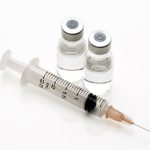
Just one dose of Pfizer’s coronavirus vaccine might be enough to largely protect people from being infected with COVID-19, preliminary research shows. The vaccine became 90% effective 21 days after the first shot in a two-dose regimen, said British researchers who looked at data from Israel, where the vaccine has been rolled out to a large portion of the population. “A second dose of the Pfizer vaccine would normally be given 21 days or more after the first, to top up and lengthen the effect of the first dose,” explained lead researcher Paul Hunter, from the University of East Anglia’s Norwich Medical School. “But here in the U.K., the decision was made to delay the timing of the second injection until 12 weeks after the first,” Hunter said in a university news release. “The logic behind this is to protect more people sooner and so reduce the total number of severe infections, hospitalizations and deaths,” Hunter explained. “But this decision caused criticism from some quarters, due in part to a belief that a single injection may not give adequate immunity.” Hunter noted that an earlier study, which has not been peer-reviewed, reported that a single shot of the Pfizer vaccine might not provide sufficient protection. “But we saw a number of flaws in how they looked at the data, including the fact that they did… read on > read on >


















